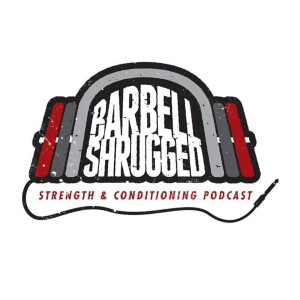
How Lifting Weights Affects Your Genetics w/ Dr. Kevin Murach, Anders Varner, and Doug Larson #748
 2024-05-22
2024-05-22
Kevin A. Murach, Ph.D., received his undergraduate degree from the University of North Carolina at Chapel Hill, where he earned the Ronald Hyatt Scholarship in Exercise Science. After graduating, Dr. Murach completed a master’s degree in Exercise Physiology at James Madison University at Harrisonburg, Virginia, then earned his Ph.D. in Human Bioenergetics from the Ball State Human Performance Laboratory in Muncie, Indiana. His dissertation was a collaboration with NASA aimed at optimizing the exercise prescription for astronauts on the International Space Station.
After Ball State, Dr. Murach spent six years as a post-doctoral fellow/scholar at the University of Kentucky Center for Muscle Biology in Lexington under the guidance of Drs. Charlotte Peterson and John McCarthy. During this time, he was supported by two National Institutes of Health grants (F32 and K99), was recipient of the Thomas V. Getchell Memorial Award from the University of Kentucky Grant Writing Workshop, won the 2017 FASEB BioArt contest and was an NIH NIA Butler-Williams Scholar.He now is an assistant professor in the Department of Health, Human Performance and Recreation in the University of Arkansas College of Education and Health Professions.
His current research uses human muscle samples, primary cell culture and genetically modified mouse models to understand the molecular cues that drive exercise adaptations and aging, and the interaction between these two (among other things). In his free time, Dr. Murach enjoys spending time with his wife, Dr. Kyndal Murach, exercising, building custom watches, cooking, smoking meats and collecting bourbon.
He shared this preprint he recently posted: https://www.biorxiv.org/content/10.1101/2024.03.26.586857v1
Summary: This study investigated the molecular mechanisms underlying muscle recovery after exercise, focusing on the temporal dynamics of gene expression and DNA methylation. Biopsies of the vastus lateralis muscle were taken before and at various time points (30 minutes, 3 hours, 8 hours, and 24 hours) after resistance exercise (RE), along with a control group. RNA sequencing and DNA methylomics were employed to analyze gene expression and methylation patterns, respectively, complemented by computational methods.
Work with RAPID Health Optimization
Dr. Kevin Murach on Instagram
Anders Varner on Instagram
Doug Larson on Instagram
Coach Travis Mash on Instagram
More Episodes
Create your
podcast in
minutes
- Full-featured podcast site
- Unlimited storage and bandwidth
- Comprehensive podcast stats
- Distribute to Apple Podcasts, Spotify, and more
- Make money with your podcast
It is Free
- Privacy Policy
- Cookie Policy
- Terms of Use
- Consent Preferences
- Copyright © 2015-2024 Podbean.com






